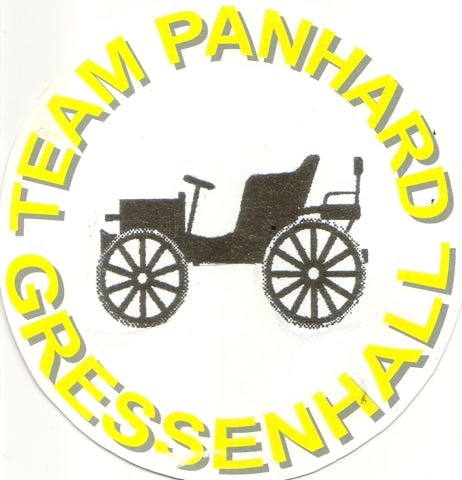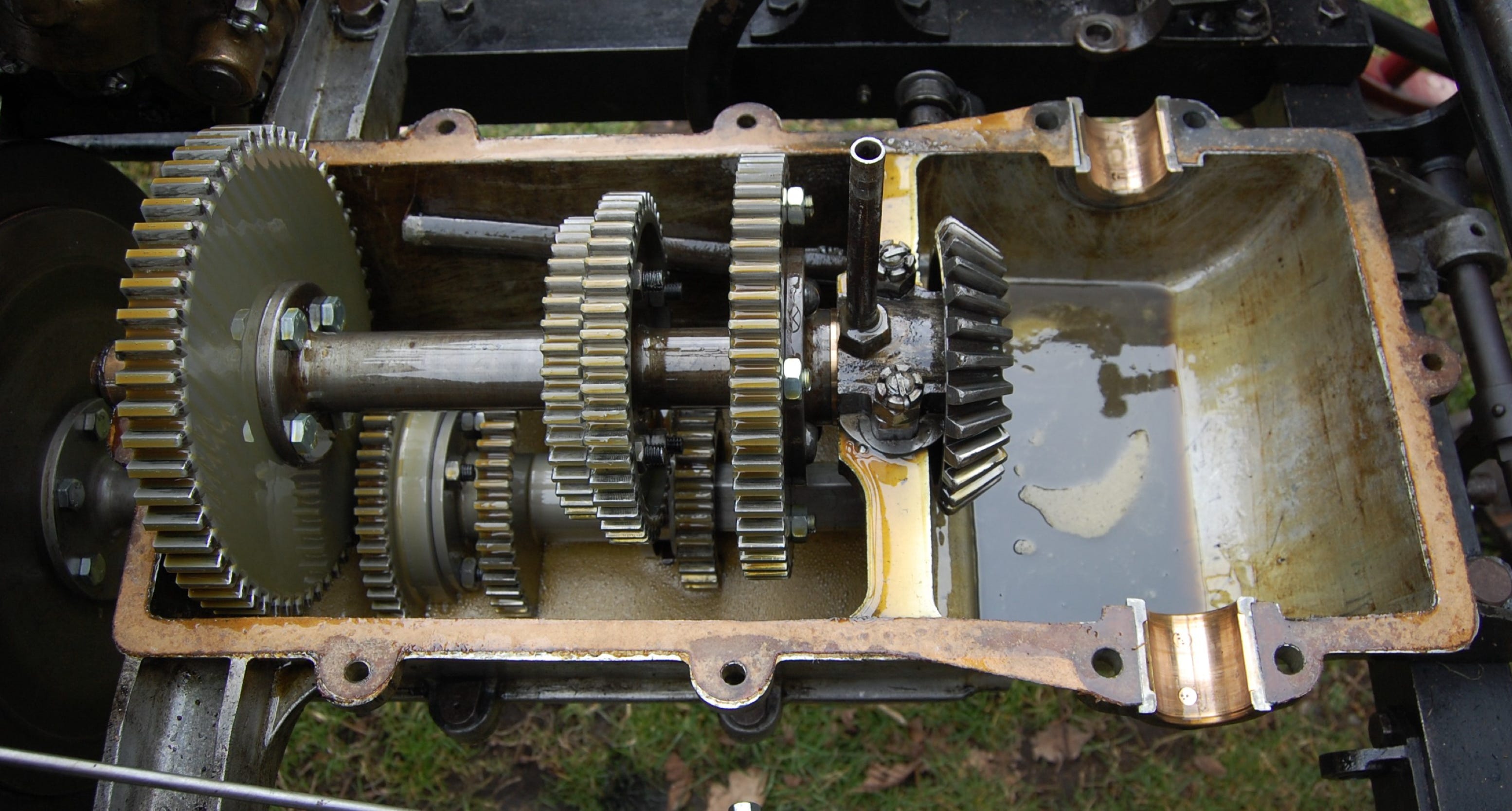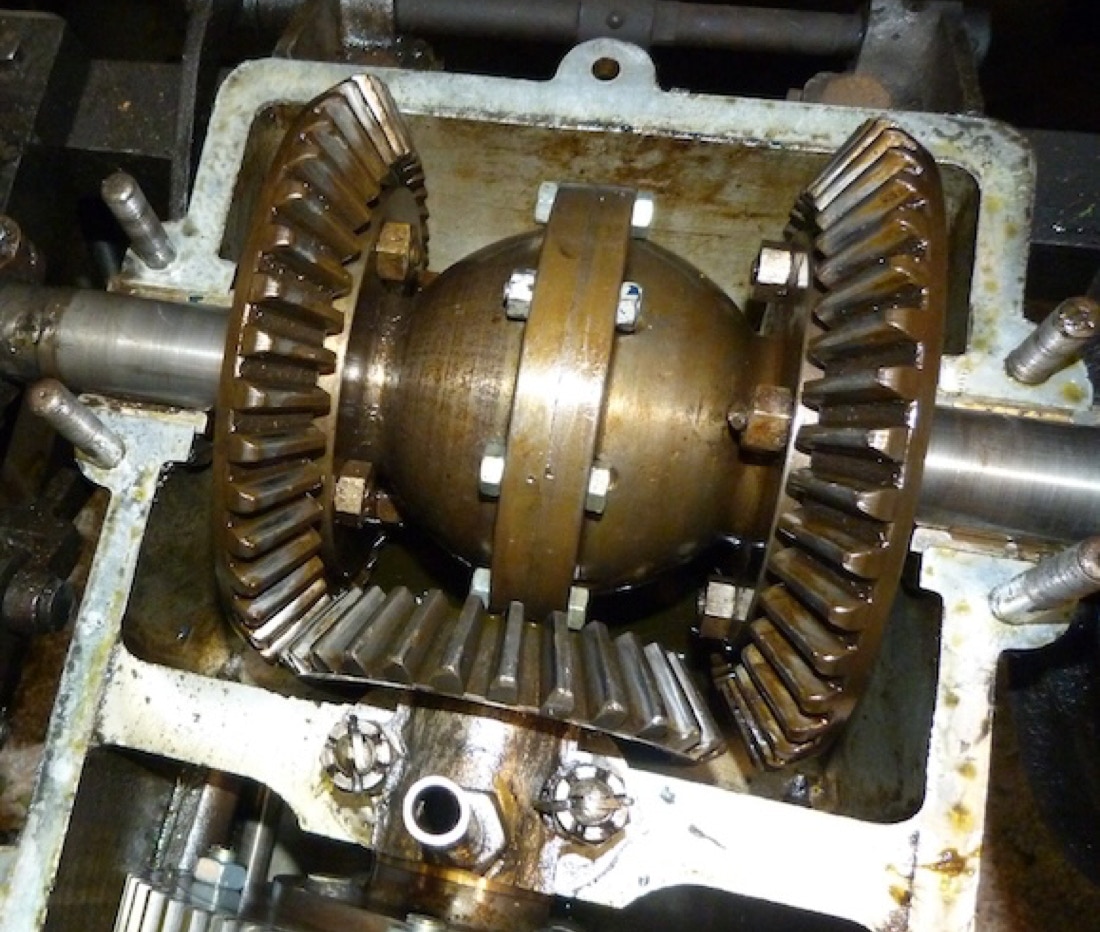
The Transmission



Transmission
The drive from the engine to the gearbox is controlled by a clutch, which is conical and engages in a matching seating in the flywheel (which is huge). Originally the friction material was leather, but now it is made from modern clutch lining material.
The gearbox has four speeds, and is of the sliding mesh type. The input shaft from the clutch has a square section and on that slides a gear cluster of four gears, positionally controlled by a selector fork connected to the gear lever. The gearbox output shaft also has four gears and a bevel pinion at the rear to connect to the differential. Moving the gear lever slides the entire gear cluster longitudinally along the input shaft and the positions and diameters of the gears correspond with those on the output shaft to give the various ratios. As the entire gears are moving the teeth clash with each other on engagement unless the speeds are perfectly matched.
The differential assembly is unusual in that it has two crown wheels. The assembly slides such that either crown wheel can be engaged with the gearbox output shaft pinion, thus giving forward and reverse rotations to the drive shafts. This seems like a clever system until you recognise that the parting loads on the crown wheel and pinion are huge and necessitate significant thrust bearing capability to prevent the gears parting.
The differential output shafts pass through bearing housings bolted to the chassis (with a tongue-and-groove joint to accommodate misalignment) and have chain sprockets attached at the outer ends. From here drive chains on each side transfer the rotation to the rear sprockets bolted through the spokes of the wheels. The wheels rotate independently on the rear axle with bronze bushes as the wheel bearings.
Gearbox internals (differential removed) The square section input shaft is at the bottom


Differential assembly
Page updated
Copyright Team Panhard
2024